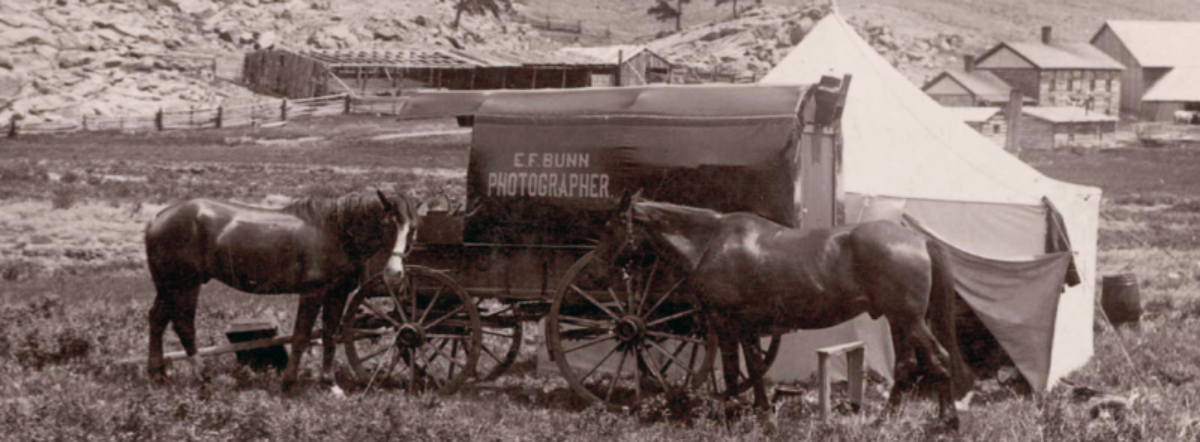Kathy Gibson wrote this blog post about her great-grandfather, Frank Xavier Gonner.

A twenty-year old man from Luxembourg arrived at New York’s Castle Garden September 2, 1880, speaking French, German, Luxembourgish, and Latin. He was a well-educated gardener like his father, who intended his only son’s future to be the priesthood or the German Army. Frank Xavier Gonner did not want either occupation. He sought out one uncle in Dubuque, Iowa who published a magazine for Luxembourgers in America and wrote a book titled Luxembourgers in the New World. Frank traveled west to Denver, Colorado, where his other uncles Jean-Pierre and Matthias-Prosper, had a nursery business, offering flowers and winter vegetables.
Frank left them in about 1883 and followed the railroad south to Santa Fe, New Mexico; he became a vegetable grocer. He spent a few years there with several partners but by 1887 he followed the railroad northwest to Durango, Colorado. He roomed with the A. J. Faris family from Clinton, Missouri. His whole world changed in 1888 when he met the family’s half-sister, Hattie Estelle Roberts, and her father, William Henry Roberts.
Durango in the early days resembled Luxembourg, with farmlands, rolling high hills, and a river running through it. But it was a growing frontier town, filled with people from all over the world: miners, railroad men, bankers, farmers, families, and Civil War veterans. William Henry Roberts and his partner Anson Corey, both photographers from Missouri, trained Gonner in portraiture in 1889.
Gonner married Robert’s daughter in June 1891. They spent their honeymoon in Silverton. The couple had three children and the third died after birth and his wife died ten days later in June 1897.

After a large section of Durango burned in July 1889, Gonner & Leeka created a photographic collection of new buildings and homes to promote the rebuilt town. Their second collection consisted of 69 views of artifacts excavated from the 1891 Grand Gulch expedition, but these photographs have been lost to history. Grand Gulch is in southeast Utah with many canyons filled with small communities of the Ancestral Puebloans.
In July 1891 Gonner took his well-known portrait of Gustaf Nordenskiold, the Swedish archaeologist. He also photographed artifacts from a second Utah expedition in 1892. In the years 1889 and 1893 Gonner suffered two personal fire losses.
The Denver Camera Club awarded Gonner first prize in 1897 for a portrait of William Wallace, called “Navajo Bill”. Wallace was a pharmacist from Oregon who, at the insistence of his brother in Animas City, moved to the Durango/Farmington area in 1883 to heal from tuberculosis. He became a trader of Navajo goods.

Gonner produced important historical photographs, many portraits of the townspeople, the fire department, the local brass band, of which he was a member, the Durango Wheel Club, miners’ groups, school children, graduation classes, the local Southern Ute chiefs, the railroad, smelters, and his family.
David Day, editor of the Durango Democrat, published several special newspaper editions using Gonner’s photographs. The largest, published in 1901, featured Durango and her business residents. Together these men also displayed a photographic collection of those original San Juan County Pioneers, displayed at the Democrat office and the Gonner gallery. He sold Kodak cameras at his gallery and offered photo-processing. After purchasing a music store in 1907, he sold pianos, sheet music, and musical instruments.
He played the B-flat baritone in the Woodman Band. He had membership in benevolent fraternal groups: the Durango Elks (he was the Exalted Ruler in 1909-10), the Ancient Order of United Workmen, the Ancient Order of the Pyramids, the Fraternal Mystic Circle, and Woodmen of the World.
Several factors may have contributed to his decision to end his life in a box car on a cold February night in Silverton in 1912. He was deeply in debt. His music store partner, a piano salesman, left their business in 1911. In January 1912 the building he had rented for almost 20 years, along with lots owned by the Elks on one block on Main, were sold to the federal government for the new Durango federal building and post office. After his death his entire gallery inventory was sold to pay his debts. His nearly adult children, under guardianship, received only the benefits from his W.O.W. and Mystic Circle life insurance. He is buried with his family at Greenmount Cemetery, Durango. The post office wasn’t completed until 1929.

Frank Gonner is best remembered for his photograph of the Durango Wheel Club picnic dated June 16, 1895. The members stand with their bicycles on Baker’s Bridge north of Durango, which spans the Animas River. In 1995 the Animas Museum in Durango printed a commemorative poster for the 100th anniversary of the Bicycle Club. It is still available for purchase.
Kathy Gibson was born in CA but raised in Colorado, not knowing much about her heritage. She received an old trunk full of family memorabilia, obituaries, and photographs in 1986 and has been researching ever since. She now lives in Michigan with her daughter and husband, a fellow genealogist, and they return to Durango each year for more research. She is the family genealogist and writes about her great-grandfather and his photography, his friends in Durango, and her family’s history for the years 1881-1912. The Animas Museum in Durango invited Kathy to give a zoom talk on Frank Gonner in 2022.
Thank you to Mack Frost, Rights & Reproductions, McCracken Research Library, Buffalo Bill Center of the West for providing the scan of Navajo Bill. Beverly W. Brannan, former photography curator at the Library of Congress, Prints & Photographs Division, kindly proof-read this post.
